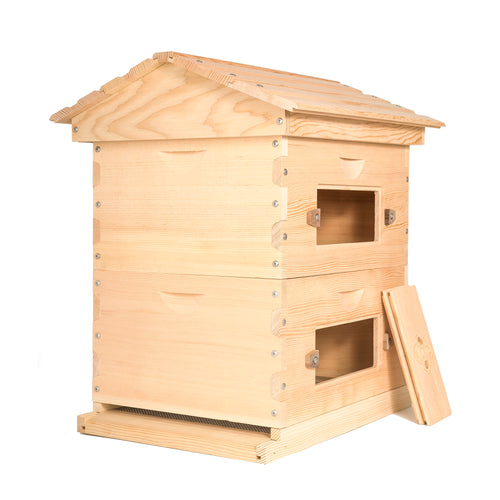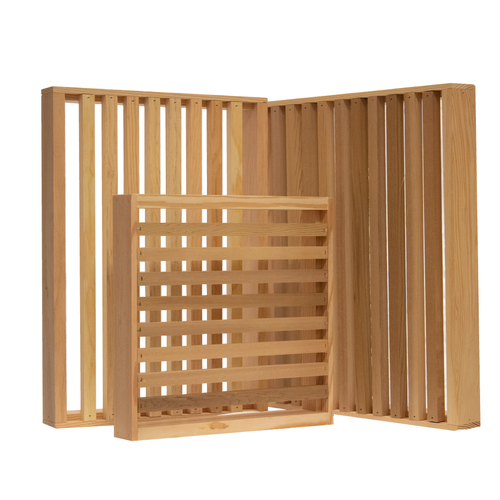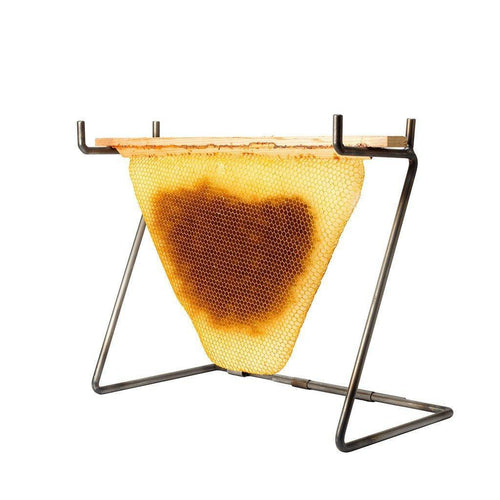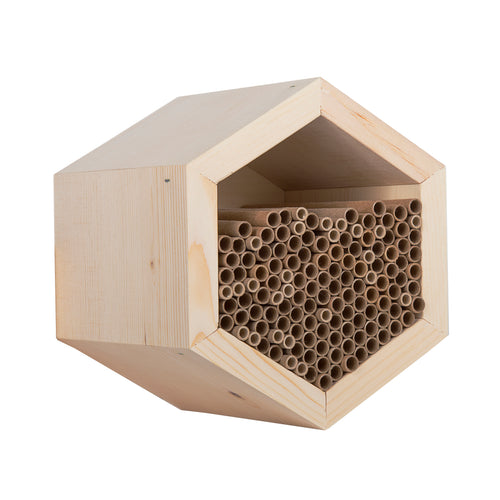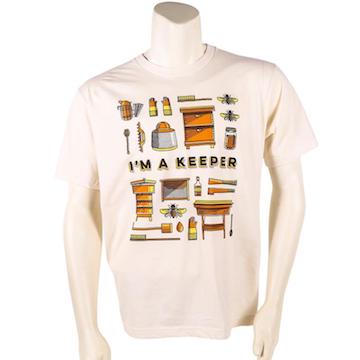
Beekeeper Profile: Mandy Shaw of Waggle Works
April 12, 2018
We asked our pal Mandy Shaw, owner of waggleworkspdx.com, a few questions about how she got into beekeeping. Waggle Works offers beekeeping classes, consultation hands on hive help, and swarm rescue, in and around Portland, Oregon. Waggle Works is on a mission, promoting pollinator stewardship and the joy of beekeeping. Mandy Shaw, is also President of Portland Urban Beekeepers. She loves sharing her passion for bees with others and especially enjoys helping other beekeepers gain confidence in their stewardship and understanding of their bees!
Bee Built: Hi, Mandy! How did you get into Beekeeping?
Mandy Shaw: I became fascinated with bees in 2013 after watching the documentary “More than Honey.” I really wanted to get involved but the thought of caring for honeybee hives was somewhat daunting so I started small with some mason bees, who I now refer to as “the gateway bee.” That led me to make some drastic changes in the landscape of my yard to provide more forage for bees. As I paid closer attention to what was happening in my garden I discovered that I had a variety of bees visiting! My lust for bees quickly became serious. I obsessively poured over books, articles, videos, I talked about bees to anyone who would listen (even when they weren’t listening - ha!).
In the springtime of 2015 I was working in my backyard and heard people out in the front calling my name, so I went to investigate. It was a swarm of loudly singing bees swirling around a maple tree in my front yard! I still hadn’t gotten hives and had no equipment ready so I called the Bee Allies swarm hotline. The cutest, most grumpy beekeeper came to collect the swarm. There was something deeply charming about the whole experience. That is when I decided that I was ready to take the next big step in my journey as a beekeeper. I joined Portland Urban Beekeepers, I asked other beekeepers if I could tag along on swarm calls or watch while they inspected their hives.
I got my first hives in early 2016. I caught 3 swarms that year in the tree in my front yard and several more in the community! Later that summer I joined the board of directors for Portland Urban Beekeepers as their treasurer and was voted in as president in January 2018. I feel like I have been so lucky to become a part of Portland’s unique urban beekeeping community and to be surrounded by such smart and passionate beeks. My beekeeping journey has brought me many gifts, challenges, opportunities, and thrills!
"I started Waggle Works so that I can share my knowledge and passion for bees with other beekeepers, and help them gain confidence in understanding and caring for their bees."
"Having done so much research prior to getting bees made my first year as a beekeeper so much easier!"
How many hives do you manage?
Anywhere from 3-7, I share bees with beekeeper friends so I may watch over a swarm that I caught for a period of time then pass it along to a friend. I am always amazed at the difference in bee traffic when I add or remove a colony from my backyard! This year I intend on expanding my backyard apiary, and the apiary that I keep at a farm in West Linn, Oregon.
What do you like about catching swarms?
Swarm catching is my adrenaline sport! My heart practically explodes out of my chest the moment I get a text from the swarm hotline. I keep my car loaded with swarm catching gear all season so that I can zoom right over to wherever the swarm is.
"Taking a swarm call is also a golden opportunity to connect with the community as a bee advocate."
I enjoy the aspect of teaching onlookers about swarms and how incredible bees are.
I really LOVE watching scout bees discover the bait hives that I put up. It's fascinating to see them examine every part of the box inside and out, they also inspect the tree that I attach the bait hive to. Seeing their numbers increase over the following days and ultimately the arrival of the swarm is something I will never tire of. The vibrating song of a new colony, and the joy that they have chosen the housing that I put out for them is exhilarating.
What is one thing you'd like people to know about catching swarms?
Catching swarms is an important aspect of beekeeping and a valuable service to the community, so being prepared for your chance to collect one is important. Swarm catching can be physically challenging and sometimes the bees are in a spot that is difficult to access or sometimes they don’t cooperate as readily as we would like. Having the right tools and a game plan will make it a much better experience for the beekeeper and the bees!
What are the biggest mistakes you see in swarm catching?
Taking the boxed swarm home before sundown is a big NO-NO! There are hundreds of forager/scout bees that are out doing their jobs and they deserve the opportunity to return to their colony before it is taken to its new location. Leaving bees behind can leave the home/property owners stuck with hundreds of lost and confused bees and that can leave a lasting negative impression.
Advice for a total swarm - catching rookie?
Be prepared, calm and patient patient. Have fun with it, and don’t be afraid to ask for another beekeepers help.
Any funny or surprising swarm catching stories?
The Igloo bees. This happened during my first summer as a swarm catcher. I got a text from the swarm hotline that a swarm the size of a basketball had been reported 1 mile from me and was over 20 feet high. I drove over and spotted the bees which were hanging in a tree about 25 feet over a pedestrian walkway. The cluster of bees was blocked by lots of other branches and foliage, and so high up that I couldn’t just reach them with a ladder. This catch was going to need some serious tactical planning!
My husband Sepp was key to this swarm retrieval. We met up at the swarm site and formulated a plan. We had to pull branches out of the way with rope secured to a nearby fence so that when we cut the swarm from the tree it would have a clear drop path. Once the branches were pulled away, I set out a white sheet on the ground and Sepp climbed up a ladder and with an extendable pole saw he cut the branch that the bees were on. It was like a bee bomb had gone off when they hit the ground! (Disclaimer - this is not my preferred method of swarm catching - it is too rough and I have since obtained better gear for reaching high-up swarms).
I brought a cardboard nuc box to house them in, and began scooping them up with pieces of cardstock and pouring them into the box, eventually the rest of the bees began marching in. There was one problem though, the box wasn’t nearly big enough. I decided to let them settle where they were because they had been through enough as it was. I went home to find something bigger. It was already getting really close to sundown so I needed to act quickly. The only container I could come up with was a large Igloo cooler. By this time a beekeeper friend of mine had shown up to be part of the action and we drove back to where the bees were. When we got there, the bees had filled up the box and were an inch thick around the outside of the box. There were a handful of rocks near the bees - evidence that someone been throwing rocks at them. Not wanting to disturb them any more, we used the sheet as a stretcher and carefully lifted the bees and the box into the cooler. We left the lid propped open so they could breathe on the ride home.
We housed them into a proper hive once we got them home by setting up a ramp to the hive entrance and carefully poured some of them onto the ramp and some of them into the hive. Housing a swarm in the dark is not advisable, but I didn’t want to leave them in the cooler all night. Luckily their move into the hive was easy and with minimal confusion and no stings.
Leave a comment
Comments will be approved before showing up.



